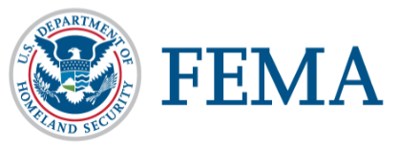
IRISH stargazers are set for a huge treat tonight, as a rare event will be visible in the skies. Astronomy Ireland has confirmed that a supermoon eclipse will take place tonight - and urged people to take the day off work in order to ensure they spot the fascinating sight. They are advising Irish people "to book Wednesday off work so they can stay up late on Tuesday night".
In clear skies, you will be able to see a partial eclipse of the moon, which they describe as "a wonderful and rare spectacle of nature". As well as it being a partial eclipse, it is also especially rare as the Full Moon is a SuperMoon, meaning that the moon is at its closest to earth. It is also the Harvest Moon, which is the moon closest to the autumnal equinox.

The eclipse will run for just over an hour, beginning at 3.13 am and lasting until 4.16 am on the morning of Wednesday, September 18.
During the mid-eclipse at around 3.44 am, stargazers will be able to see a large dark 'bite' taken out of the Moon's top edge. This is when the Earth's shadow in space crosses the lunar surface.
David Moore, Editor of Astronomy Ireland magazine wrote the eclipse article in the September issue of the AI magazine. He said: " Met Eirean n is forecasting mostly clear skies for the whole of Ireland so everyone should get to see this SuperMoon eclipse, a very rare event, so it is well worth staying up for and booking a day's holiday if you have work the next day. "No equipment, just the naked eye, is needed to see the eclipse.
But if you do have binoculars you will get a close-up view." As it is a partial eclipse, the Full Moon will not turn red (so-called 'Blood Moon') as this only happens during a Total Eclipse. The next Lunar Eclipse next March will be a Total Lunar Eclipse that will be visible from Ireland.
Unfortunately, however, that eclipse will not be a SuperMoon. ONLOOKERS must always observe caution when looking at a solar eclipse. You should never look directly at the sun without proper eye protection, which includes: The eclipse taking place tonight will be partial, meaning cameras and binoculars can be used with solar filters.
You’ll need to remove the solar filters during totality if you want to capture the corona on camera. However, if it was a full eclipse would need to wear eclipse glasses or use solar filters to safely view the event - even through cameras or binoculars. This eclipse can be photographed even with a phone camera and Astronomy Ireland is urging those who take pictures to send them on to them.
They will feature in a special report in the next issue of the magazine. Details of where to send your best photograph (just one per person) are on the society's website. A Harvest Moon, as it occurring tonight, is the term given to the Full Moon that appears closest to the autumn equinox.
This is the point after which daylight hours start to reduce for us in the Northern Hemisphere. All the full Moons have nicknames, which usually relate to the time of year they appear. The Harvest Moon is so-called because of its connection to farmers harvesting crops.
AN ECLIPSE occurs when a planet or the Moon blocks the light from the Sun, casting a shadow on Earth. Anyone within this shadow can see the astronomical event The alignment of three celestial objects is known as a syzygy. On Earth, we can experience two kinds of eclipses: solar eclipses and lunar eclipses.
A Solar Eclipse happens when the Moon blocks the Sun's light, casting a shadow on Earth. During the day, the Moon moves over the Sun and it gets dark. This Total Eclipse happens every year and a half somewhere on Earth, while a partial eclipse happens at least twice a year.
Seeing a Total Solar Eclipse is rare, as the Moon's shadow is not very big when it is cast onto Earth. As a result, only a small portion of places will see it - those who are experiencing daytime at the moment the eclipse occurs and are in the path of the Moon's shadow. According to NASA , the same spot on Earth only gets to see a Solar Eclipse for a few minutes every 375 years.
During a Lunar Eclipse , the Earth blocks the Sun's light hitting the moon. The Full Moon fades away during the night as the shadow cast by the Earth blocks it. Many people will get to see a Lunar Eclipse, as it will be visible to those who are experiencing nighttime when it happens.
Nasa said: "As the full Moon closest to the autumnal equinox (the end of summer and start of fall), this is the Harvest Moon. "During the harvest season, farmers sometimes need to work late into the night by the light of the Moon. "The full Moon rises an average of 50 minutes later each night, but for the few nights around the Harvest Moon, the Moon seems to rise at nearly the same time: just 25 to 30 minutes later across the northern USA, and only 10 to 20 minutes later farther north in Canada and Europe.
"The Harvest Moon is an old European name with the Oxford English Dictionary giving 1706 as the year of its first published use. Most years the Harvest Moon falls in September but this is one of the years it falls in October." Full Moons occur when the whole side of the Moon that's facing Earth is lit up by the Sun's rays.
.














